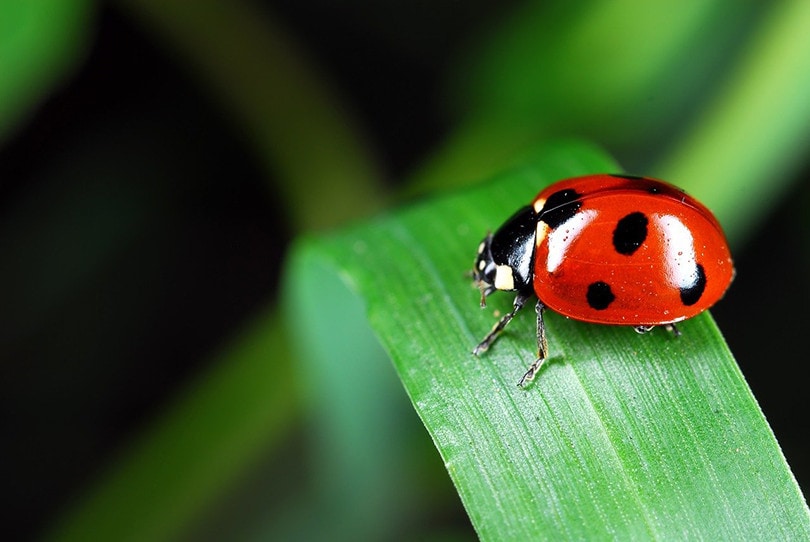Do Ladybugs Bite? Facts & FAQs
-
Ed Malaker
- Last updated:

Ladybugs live throughout the United States and often make their way into people’s homes in early fall. Since they can gather in large numbers, many people wonder if they bite. Ladybugs do occasionally bite humans, but their jaws aren’t large enough to break the skin. Keep reading as we explain why ladybugs bite, what kind of injury you can expect, and a few other facts about these beetles.
Will a Ladybug Bite Me?
Unfortunately, ladybugs do bite. A researcher¹ performed a test by placing his hand into 11 plastic containers containing 641 beetles to see if any would bite and found that approximately 26% would bite for no reason. He found that the insects would generally attack the parts of the hand that didn’t contain hair, like the fingers and inside of the wrist. He also found that if one beetle managed to draw blood, more would come to feed.

What Is a Ladybug Bite Like?
The jaws of the ladybug are not likely to break the skin unless they get you in a sensitive area, like the wrist. However, even without damaging the skin, the jaws can leave a scratch that can make the skin sore or itchy with a raised bump. Their legs are also sharp and can cause a similar injury.
Why Do Ladybugs Bite?
The scientist was not threatening the ladybugs, so it is unclear why they bit him. Possible reasons for ladybugs biting humans include that they mistake the skin for fruit or another edible substance. They may also feel the person’s body warmth and attempt to burrow because they like to stay inside places like house walls when it gets cold.

Do All Ladybugs Bite?
The world has more than 5,000 species of ladybugs, and there are 24 species in America. All have sharp jaws and legs that can damage the skin. The most common types are Harmonia axridis, which is the common ladybug; the Asian lady beetle, an invasive orange ladybug; and the ladybird beetle. These varieties are the most likely to enter your home, so they are typically the ones to get close enough to bite.
Do Ladybugs Pose Other Dangers?
Ladybugs are generally safe. Even though they bite, the injury is usually limited to a scratch. However, some people can experience an allergic reaction that might include difficulty breathing and swollen lips, which might require a trip to the emergency room.
Are Ladybugs Pests?
Ladybugs are helpful insects that prey on aphids and other crop-destroying pests, so most farmers and gardeners are happy to see them. However, they can invade your home in large numbers once the temperature starts to drop, which can cause damage to your home, and they can also become annoying indoor pests.

How Can I Prevent Ladybugs From Getting Into My Home?
- Make sure all your windows have screens.
- Check around your house for small openings, and seal them with caulking.
- Add lavender plants inside and outdoors to help drive away the ladybugs.
- Create a trap by cutting a 2-liter bottle to invert the top. Put jam or jelly in the bottom to attract and trap the ladybugs.
- Vacuuming and sweeping can help you remove ladybugs from inside your home. However, if they get scared, they ooze oil from their joints, which can stay in your walls and carpeting.
- Spraying insecticide around your home in late September or October can help prevent the bugs from entering your home in the fall.
- Spreading diatomaceous earth around your property, especially where you see ladybugs, will help reduce the population by causing them to dry out and die.
Summary
Unfortunately, ladybugs do bite. However, they rarely break the skin and will not cause any serious injury unless you are allergic. In most cases, their bite or sharp back legs will leave scratches that can make the skin red, sore, and itchy, with a raised bump. Although these insects are generally helpful, you can use pesticides, traps, and diatomaceous earth to prevent them from entering your home in the fall and becoming a nuisance.
- You Might Also Be Interested In: 12 Incredible Ladybug Facts You Need to Know!
Featured Image Credit: GLady, Pixabay
Contents
